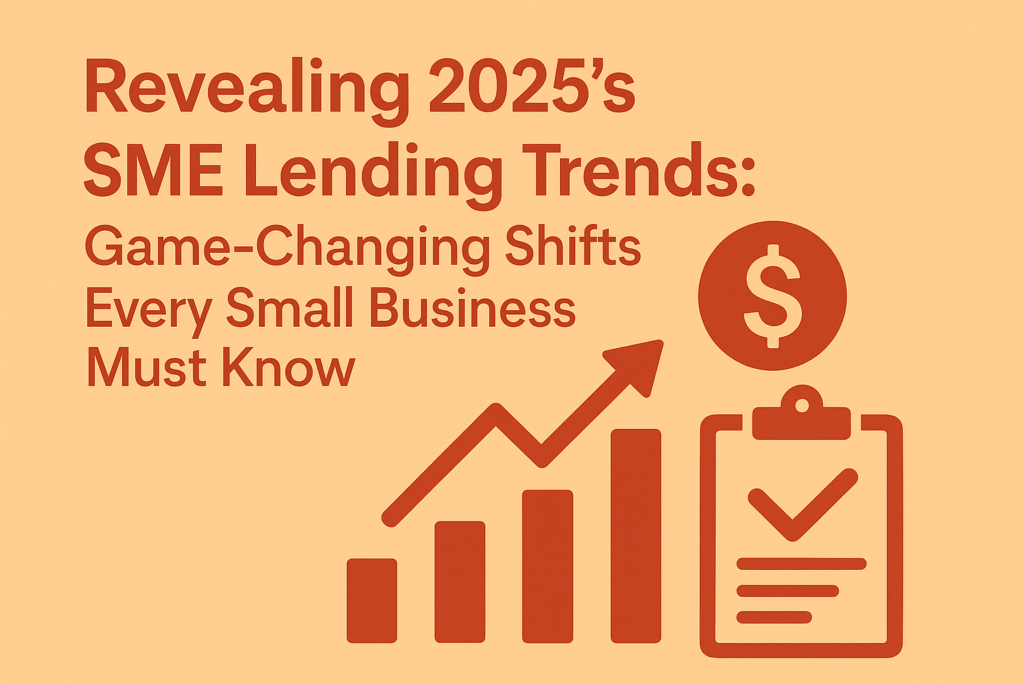
Table of Contents
Introduction: Why 2025 is a Pivotal Year for SME Lending
SME lending trends in 2025 are shifting fast — and small businesses need to stay informed to thrive. With rapid technological innovations, evolving financial landscapes, and significant funding gaps, understanding the future of small business loans is no longer optional — it’s essential.
As the economic recovery continues post-global disruptions, small businesses must align their strategies with upcoming SME lending trends to secure competitive, reliable funding.
Emerging SME Lending Trends in 2025
The SME lending space is undergoing dramatic transformation. These are the key SME lending trends defining the 2025 financial ecosystem:
- Alternative Lending Growth: Non-traditional lenders, including fintech platforms, are increasingly popular due to speed, flexibility, and lower barriers.
- Embedded Finance: Expect more lending to be directly integrated into digital platforms that small businesses already use.
- Hyper-Personalized Offers: AI-powered credit scoring is enabling customized loan terms, benefiting SMEs with unique needs.
These SME lending trends offer fresh opportunities, but also demand sharper financial literacy and smarter decision-making from small business owners.
Tech Transformations Reshaping Small Business Loans
Technology continues to redefine how loans are sourced, approved, and repaid. Major tech-driven developments include:
- AI & Machine Learning: Automating credit risk evaluation for faster approvals.
- Blockchain: Enabling secure, transparent peer-to-peer lending models.
- Digital Onboarding: Streamlined application processes using e-KYC and digital verification.
These innovations are central to SME lending trends and are expected to be even more impactful in underserved markets.
Funding Gaps and Financial Challenges to Watch
Despite new technologies, many small businesses still struggle to secure adequate funding. Here’s why:
- Credit Accessibility Issues: Traditional banks maintain strict criteria, making approval tough for first-time borrowers or those without strong credit.
- Geographic Disparities: Rural and semi-urban SMEs often face limited access to reliable financial institutions.
- Awareness Gaps: Many small businesses aren’t aware of new lending solutions available through fintech or government programs.
These gaps highlight the importance of staying up to date with SME lending trends to avoid missed opportunities.
How SMEs Can Prepare for Lending Changes
To navigate 2025’s SME lending trends effectively, businesses should:
- Monitor Lending Marketplaces: Keep track of evolving lender offerings across fintech platforms.
- Improve Creditworthiness: Maintain accurate financial records and explore credit-building tools.
- Engage in Financial Education: Attend workshops, webinars, and use digital tools to understand lending terms better.
Small businesses that adopt a proactive approach will gain a competitive edge in a fast-evolving credit ecosystem.
Final Thoughts: Making Informed Funding Decisions
The SME lending trends emerging in 2025 offer both promise and complexity. Technology is making loans more accessible and personalized, but funding gaps persist. For small businesses, understanding these trends is the first step in making confident, informed decisions when exploring small business loans.
By embracing innovation, staying aware of market shifts, and seeking the right financing options, SMEs can secure the capital they need to grow and lead in the years ahead.
